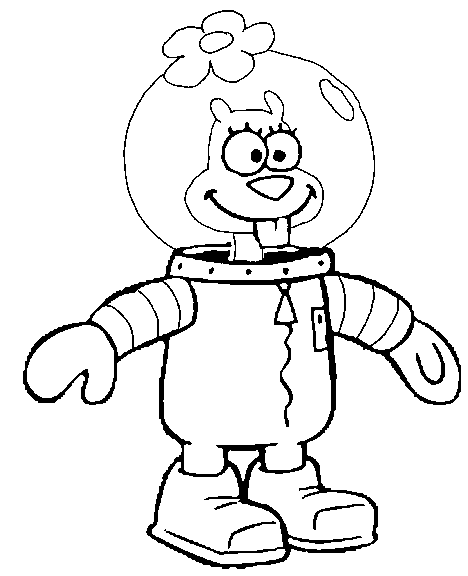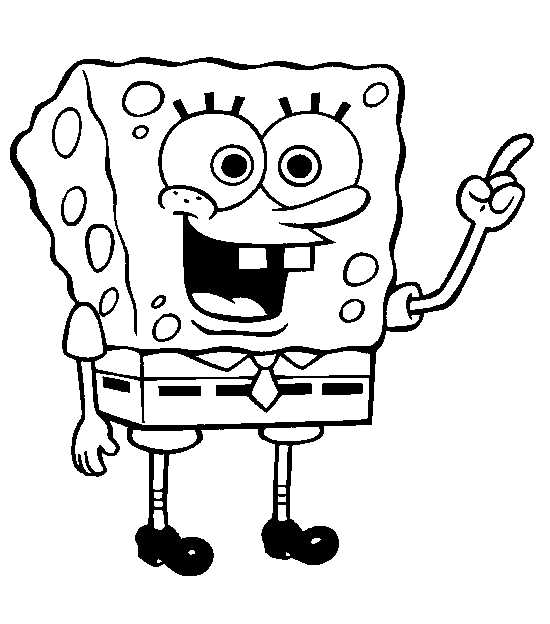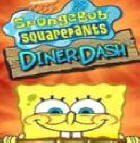Color picture of Sandy SpongeBob
Tuesday, January 29, 2008
Monday, January 28, 2008
Mickey Mouse Pictures
Mickey Mouse is a comic animal cartoon character who has become an icon for The Walt Disney Company. Mickey Mouse was created in 1928 by Walt Disney and Ub Iwerks and voiced by Walt Disney. The Walt Disney Company celebrates his birth as November 18, 1928 upon the release of Steamboat Willie. The anthropomorphic mouse has evolved from being simply a character in animated cartoons and comic strips to become one of the most recognizable symbols in the world.
Mickey Mouse
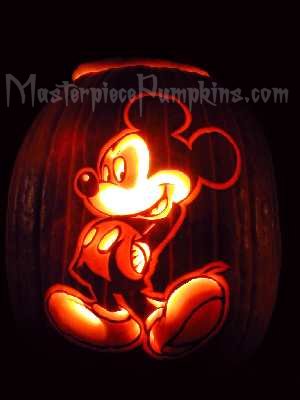




Mickey Mouse
Sponge Bob Squarepants & Patrick Limited Edition Animator's Maquettes- SpongeBob
SpongeBob Squarepants Limited Edition Animator's Maquette

Sponge Bob Squarepants & Patrick
This set of SpongeBob Squarepants and Patrick Limited Edition Animator's Maquettes is reproduction of the 3D reference sculptures Nickelodeon animators use in producing the animated show.
Monday, January 21, 2008
Tuesday, January 15, 2008
'Shaggy & Scooby Get A Clue!' Episode Guide
Scooby Doo
'Shaggy & Scooby Get A Clue!' Episode Guide
Here's a guide to the episodes of the newest "Scooby-Doo" series, "Shaggy & Scooby Get A Clue!"
Show 345-411: "Shags to Riches" (pilot)
After inheriting a fortune from Shaggy's Uncle Albert, Shaggy, and Scooby learn that they have been charged with tracking down the bumbling bad guy Dr. Phineus Phibes, who wants Uncle Albert's formula for nano-technology, which is hidden inside Scooby Snacks.
Show 345-412: "More Fondue for Scooby-Doo!!!"
Shaggy and Scooby thwart Dr. Phibes' plan to melt the glacier of Mount Zeryodelwietzen in Switzerland in order to ruin a conference on global warming to be held there.
345-413: "High Society Scooby"'Shaggy & Scooby Get A Clue!' Episode Guide
Here's a guide to the episodes of the newest "Scooby-Doo" series, "Shaggy & Scooby Get A Clue!"
Show 345-411: "Shags to Riches" (pilot)
After inheriting a fortune from Shaggy's Uncle Albert, Shaggy, and Scooby learn that they have been charged with tracking down the bumbling bad guy Dr. Phineus Phibes, who wants Uncle Albert's formula for nano-technology, which is hidden inside Scooby Snacks.
Show 345-412: "More Fondue for Scooby-Doo!!!"
Shaggy and Scooby thwart Dr. Phibes' plan to melt the glacier of Mount Zeryodelwietzen in Switzerland in order to ruin a conference on global warming to be held there.

Scooby Doo
Chaos reigns as Shaggy and Scooby crash a country club in order to save three world-renowned inventors from the clutches of Dr. Phibes.
345-414: "Lightning Strikes Twice"
From the safety of his spaceship, Dr. Phibes attempts to create an electrical storm that will cover the Earth for all time, and it is up to Shaggy and Scooby to save the world.
345-415: "Party Arty"
Dr. Phibes manages to slip a dangerous robot butler into Shaggy's and Scooby's mansion to replace their own "ro-butler," Robi, on the eve of an important mansion-warming party.
345-416: "Smart House"
Shaggy and Scooby fight an artificially intelligent computer virus that lodges into their mansion's advanced computer system (dubbed "Smart House"). They must prevent it from corrupting the country's weapons defense systems.
345-417: "Chefs of Steel"
During the taping of a cooking show, Shaggy and Scooby find themselves squaring off in the kitchen against the evil Chef Suki Sukihari and his mind-control hibatchi.
345-418: "Mystery of the Missing Mystery Solvers"
Shaggy and Scooby are called on to find the world's most famous detectives, all of whom begin disappearing at the Mystery Solvers of the Millennium Awards. As they track the trackers, they discover the event's host is not who he appears to be.
345-419: "Don't Feed the Animals"
Dastardly Dr. Phibes turns his attention to the rain forest, which he plans to destroy in his quest for a plant that promises immortality. Shaggy and Scooby team up with a pack of marmosets to fight him.
345-420: "Almost Ghosts"
Dr. Phibes uses an invisibility ray on two of his henchmen and sends them to steal a disintegration ray housed in a government facility. Joining the fray are Fred, Velma, and Daphne, who think they are chasing ghosts.
345-421: "Pole to Pole"
Shaggy and Scooby enter the "Polar Bear 3000" race across Greenland in order to stop Dr. Phibes from transporting a device that will knock out all electronic and telecommunications equipment on the planet.
345-422: "Big Trouble"
Out in the desert, Shaggy and Scooby once again battle Dr. Phibes, who this time has built a monstrous giant robot in his own image.
345-423: "Operation Dog and Hippy Boy"
Dr. Phibes assembles the world's most dangerous villains and charges them with getting rid of Shaggy and Scooby. Before the dust clears, however, Dr. Phibes ends up obtaining exactly what he wanted all along: Uncle Albert's top-secret formula.
History about Garfield
In the 1970s, Davis authored a strip, Gnorm Gnat; it met with mostly negative reviews. One editor told Davis that "[his] art [was] good, [his] gags [were] great", but "nobody can identify with bugs". Davis took his advice and created a new strip with a cat as its main character. The strip originally consisted of four main characters. Garfield, the titular character, was based on the cats Davis was around growing up; he took his name and personality from Davis's grandfather James A. Garfield Davis, who was, in Davis's words, "a large cantankerous man". Jon Arbuckle came from a coffee commercial from the 1950s, and Odie came from a radio advertisement Davis had written for Oldsmobile-Cadillac. The fourth character, Lyman, was Odie's original owner; he was written in to give Jon someone to talk with. Davis later realized that Garfield and Jon could "communicate nonverbally", and Lyman was written out. The strip was originally rejected by King Features Syndicate and Chicago Tribune-New York News; United Feature Syndicate, however, accepted it in 1978. It debuted in forty-one newspapers on June 19 of that year.In 1994, Davis' company, Paws, Inc., purchased all rights to the strips from 1978-1993 from United Feature. The strip is currently distributed by Universal Press Syndicate, however, rights for the strip remain with Paws.
Garfield quickly became a commercial success. In 1981, less than three years after its release, the strip appeared in 850 newspapers and accumulated over $15 million in merchandise. To manage the merchandise, Davis founded Paws, Inc. By 2002, Garfield became the world's most syndicated strip, appearing in 2570 newspapers with 263 million readers worldwide;by 2004, Garfield appeared in nearly 2600 newspapers and sold from $750 million to $1 billion worth of merchandise in 111 countries.

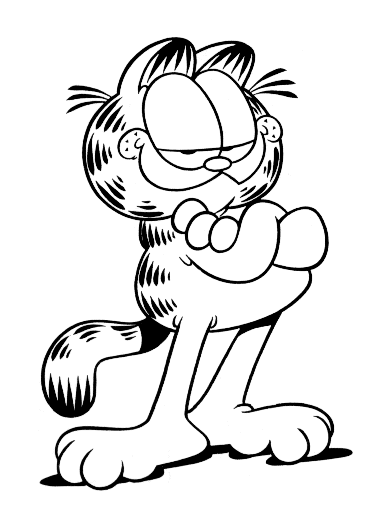
garfield wallpaper
As it progressed, the strip underwent stylistic changes. The appearance of Garfield was probably the most notable; he underwent a "Darwinian evolution" in which he began walking on his hind legs, "slimmed down", and "stopped looking [.....] through squinty little eyes". His evolution, according to Davis, was to make it easier to "push Odie off the table" or "reach for a piece of pie".
Davis is no longer the sole artist of Garfield. Though he still creates the stories and rough sketches, other artists handle the inking, coloring, and lettering; Davis spends most of his time managing the business and merchandising of Garfield.
garfield wallpaperGarfield quickly became a commercial success. In 1981, less than three years after its release, the strip appeared in 850 newspapers and accumulated over $15 million in merchandise. To manage the merchandise, Davis founded Paws, Inc. By 2002, Garfield became the world's most syndicated strip, appearing in 2570 newspapers with 263 million readers worldwide;by 2004, Garfield appeared in nearly 2600 newspapers and sold from $750 million to $1 billion worth of merchandise in 111 countries.
garfield wallpaper


garfield wallpaper
Davis is no longer the sole artist of Garfield. Though he still creates the stories and rough sketches, other artists handle the inking, coloring, and lettering; Davis spends most of his time managing the business and merchandising of Garfield.






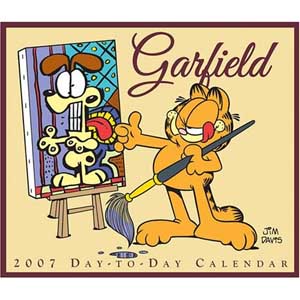
garfield wallpaper
Snoopy

Snoopy
Snoopy








Snoopy
Monday, January 14, 2008
Sailor Mini Moon
Chibiusa (Chibiusa or Rini in the English versions), is one of the central characters in the Sailor Moon metaseries. When she first appears, she is a small child from the 30th century who visits the past to seek help from the series' primary heroines, the Sailor Senshi. She later returns, a few years older, in order to train as a Senshi herself—Sailor Chibi Moon (called Sailor Mini Moon in the English anime).
Chibiusa is formally named Usagi Small Lady Serenity (Usagi Small Lady Serenity?), but in the 20th century she goes by the name Usagi Tsukino. She is given her nickname by Mamoru Chiba in the manga and Usagi in the anime in order to differentiate from the older Usagi Tsukino, Sailor Moon. The nickname is a combination of chibi (meaning runt, dwarf, shrimp) and her given name, Usagi. In her own time period, she is always called Small Lady. In the English-language adaptations, where Usagi had been changed to Serena, the diminutive "Rini" was used for Chibiusa's name.
Sailor Mini Moon



 Sailor Mini Moon
Sailor Mini Moon
Saturday, January 12, 2008
A biography of Marge Simpson

Marge Simpson
In her life she has burned her bra and starred in "Oh! Streetcar!!!" Marge has come to the rescue many times with items pulled from her hair.
* Huge jar of cash.
* Check to cover damages to Homer's car.
* Telephone number to call if Grampa falls in the bathtub.
* Money.
* Cat.
* Pacifier.
* Second pacifier.
* Chicken.
* Beach umbrella.
* Checkbook.
* Swarm of bats.
* A pencil.
Marge Simpson


Marge Simpson
Marge Simpson is also full of mother advice.
* "I don't want you wearing rings. It looks cheap. But three."
* "Well, anyone who beats you up for wearing a shirt isn't your friend."
* "You should listen to your heart, and not the voices in your head."
Loving Marge can usually be seen wearing a strapless green dress.
Marge Simpson







Marge Simpson
Tuesday, January 1, 2008
'Scooby-Doo' and Education
Many Saturday morning shows have been designed to be educational as well as entertaining. "Scooby-Doo," in any of its incarnations, is not among those shows. Young viewers have always been invited to exercise their brains by following the "Scooby" gang around as it finds clues and puts them together into a solution, but the emphasis of "Scooby" has never been anything other than entertainment. The newest version of the show, "Shaggy & Scooby Get A Clue!," is no different. While the program introduces such topical complications as global warming and jungle deforestation, it is not done in an instructional manner.
It may be surprising to learn, then, that one of the reasons for the creation of the original series, "Scooby-Doo, Where Are You!," was to satisfy the growing demand for an alternative to action-oriented cartoons that were increasingly being dubbed as "violent."
It may be surprising to learn, then, that one of the reasons for the creation of the original series, "Scooby-Doo, Where Are You!," was to satisfy the growing demand for an alternative to action-oriented cartoons that were increasingly being dubbed as "violent."
scooby doo
Exaggerated cartoon "violence" had been a staple of animation practically since the medium was invented -- though in the early years, nobody took it very seriously. This was in part because cartoons of the 1930s, '40s, and '50s were not specifically made for children -- they instead were aimed at a general theatrical audience. Only when cartoons went to television did they attract the label of "kid's stuff."
But in the mid-to-late 1960s, the television networks were increasingly taking heat for "violence" in children's programming, notably in action adventure series such as "Jonny Quest," "The Herculoids," and "Birdman." Fred Silverman, who was the head of children's programming for CBS, was looking for a show that would not include guns of any kind, extreme cartoon gags involving sticks of dynamite or frying pans as weapons, or even physical combat. "Scooby-Doo, Where Are You!!!" was designed with plenty of opportunity for slapstick, but there were never any overtly violent acts, not even fighting. Even today, nearly forty years later, with "Shaggy and Scooby-Doo Get A Clue!," the villains are vanquished more by trickery and wits than with a tangible threat.
In fact, the only time Scooby-Doo and the gang ever made network executives nervous was early on in the development period, when the initial treatment for the show was judged as too scary for a young audience. Of course, the ghost, ghoul, or monster the gang happens to encounter is usually not a supernatural creature at all, but rather a human criminal in disguise. Inevitably, the gang exposes him or her.
Now that we have the background on the cartoon, how about details on the stars themselves? In the next section, we cover Scooby, Shaggy, and the entire gang.
But in the mid-to-late 1960s, the television networks were increasingly taking heat for "violence" in children's programming, notably in action adventure series such as "Jonny Quest," "The Herculoids," and "Birdman." Fred Silverman, who was the head of children's programming for CBS, was looking for a show that would not include guns of any kind, extreme cartoon gags involving sticks of dynamite or frying pans as weapons, or even physical combat. "Scooby-Doo, Where Are You!!!" was designed with plenty of opportunity for slapstick, but there were never any overtly violent acts, not even fighting. Even today, nearly forty years later, with "Shaggy and Scooby-Doo Get A Clue!," the villains are vanquished more by trickery and wits than with a tangible threat.
In fact, the only time Scooby-Doo and the gang ever made network executives nervous was early on in the development period, when the initial treatment for the show was judged as too scary for a young audience. Of course, the ghost, ghoul, or monster the gang happens to encounter is usually not a supernatural creature at all, but rather a human criminal in disguise. Inevitably, the gang exposes him or her.
Now that we have the background on the cartoon, how about details on the stars themselves? In the next section, we cover Scooby, Shaggy, and the entire gang.
Subscribe to:
Posts (Atom)
